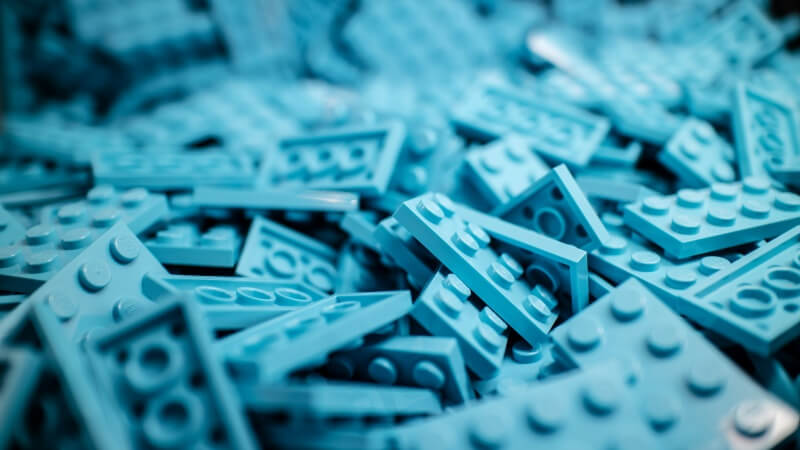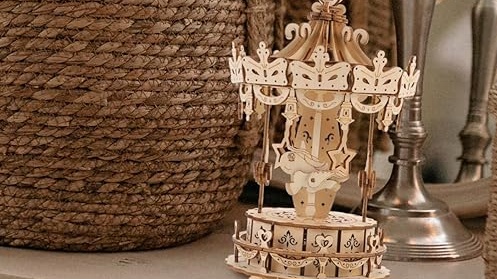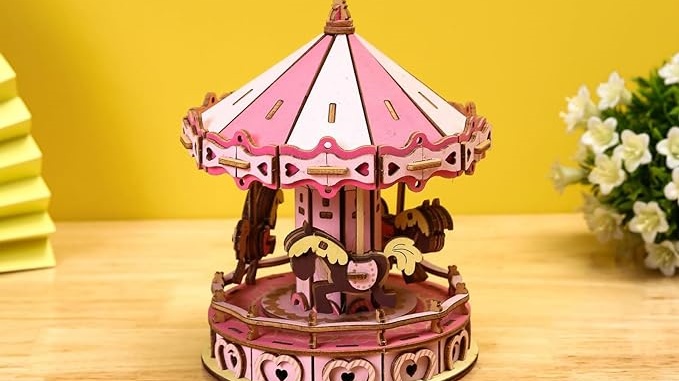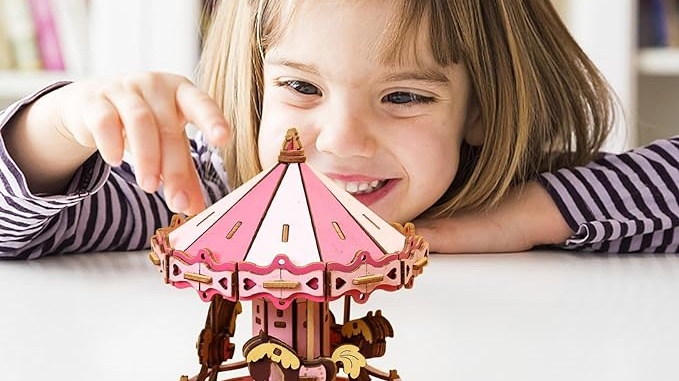
How To Add Storylines To Your Wooden Jigsaw Puzzle: A Creative Guide
Imagine a wooden jigsaw puzzle where each piece is more than a part of an image; it’s a chapter in a captivating story waiting to

The allure of a wooden cube puzzle goes beyond just solving it; it’s about preserving its timeless beauty.
Whether you’re a seasoned collector or a new enthusiast, maintaining the pristine condition of your puzzle is crucial.
In this comprehensive guide, we’ll dive into effective strategies to avoid scratches and keep your puzzle looking impeccable.
Before diving deep into the specifics, it’s crucial to understand why wooden cube puzzles demand special attention.
Unlike their plastic counterparts, wooden puzzles possess a natural charm and warmth that can be easily marred by scratches, affecting not just their aesthetic appeal but also their functionality.
Here, we’ll explore the fundamentals of wooden puzzle care, focusing on the material’s nature, the importance of regular maintenance, and the selection of proper cleaning tools.

Wood, as a living material, has unique properties that require specific care. Its porosity means it absorbs moisture from the environment, which can lead to swelling or shrinking.
This dimensional change not only affects the puzzle’s fit but also increases the likelihood of scratches as the pieces become more difficult to maneuver.
Gentle handling and awareness of wood’s natural tendencies are critical to maintaining your puzzle’s integrity and appearance.
The cornerstone of preserving your wooden cube puzzle lies in consistent and careful maintenance.
Just as a cherished piece of furniture benefits from regular dusting and polishing, your puzzle requires similar attention to detail.
Dust and grime can act as abrasives, dulling the wood’s finish and introducing scratches. Incorporating a maintenance routine that includes gentle wiping with a soft, dry cloth and occasional deeper cleans with a wood-friendly cleaner can protect your puzzle from these everyday threats.
The tools and products you choose for cleaning your wooden cube puzzle can make a significant difference in preventing surface damage.
Harsh chemicals or abrasive materials can strip the wood of its natural oils, leading to dryness and increased susceptibility to scratches.
Opt for natural, mild cleaning solutions and soft, lint-free cloths that remove dust without compromising the wood’s surface. Regular, gentle cleaning not only maintains the puzzle’s aesthetic appeal but also its functional longevity.
Adopting a proactive approach to care and handling can significantly reduce the risk of scratching your wooden cube puzzle.
By focusing on proper handling, strategic storage, and the application of protective coatings, you can ensure your puzzle remains in top condition.
The way you handle your wooden cube puzzle can greatly influence its condition.
Always use both hands when moving your puzzle, and avoid sliding it across surfaces that might have small particles or grit that can scratch the wood.
When assembling or disassembling the puzzle, do so on a clean, soft surface like a padded mat, which provides a safe buffer between the puzzle and any hard surfaces.
Proper storage is just as important as proper handling. When not in use, your wooden cube puzzle should be stored in a way that minimizes exposure to potentially damaging conditions.
A fabric-lined drawer or a custom box with a soft interior can protect the puzzle from physical damage and environmental factors like excessive sunlight or moisture.

Additionally, keeping the puzzle in a location that’s free from heavy foot traffic or the risk of being knocked over can further protect it from accidental damage.
A protective coating acts as a shield for your wooden cube puzzle, guarding against scratches and other forms of wear.
When choosing a protective product, look for natural options like beeswax or a specialized wood sealant that enhances the wood’s natural defenses without introducing harmful chemicals.
Applying a thin, even layer according to the product’s instructions can create a durable barrier that helps preserve the puzzle’s surface integrity over time.
The environment surrounding your wooden cube puzzle plays a critical role in its preservation.
By controlling factors like sunlight, humidity, and temperature, you can create conditions that support the puzzle’s long-term durability and beauty.
Sunlight can significantly affect the appearance and condition of your wooden cube puzzle.
UV rays can fade the wood’s color, making it look aged, while also weakening its structure, making it more susceptible to scratches.
Positioning your puzzle in an area that receives indirect light or using curtains to filter direct sunlight can protect it from these harmful effects, ensuring its vibrant appearance remains intact.
Fluctuations in humidity and temperature can have a profound effect on wood, causing it to expand or contract. This can not only make assembling your puzzle more challenging but also increase the risk of scratching.
Maintaining a stable environment with a consistent humidity level and temperature can prevent these issues.
Using a dehumidifier in damp conditions or a humidifier in dry settings can help achieve this balance, protecting your puzzle from the adverse effects of environmental changes.

Creating a dedicated space for your puzzle activities can safeguard your wooden cube puzzle from accidental damage.
This space should be comfortable, well-lit, and equipped with a soft surface to work on, such as a felt-topped table or a padded mat.
This not only provides a safe area for assembling and disassembling your puzzle but also enhances the overall experience, allowing you to focus on the challenge of the puzzle without worrying about damaging its beautiful surface.
Taking care of your wooden cube puzzle is an essential part of the puzzle-solving experience.
By understanding the nature of wood, adopting effective care strategies, and creating an optimal environment, you can enjoy your puzzle for years to come without the concern of unsightly scratches.
Remember, the longevity and beauty of your wooden cube puzzle are directly related to the care and attention you provide, ensuring that this cherished item remains a source of joy and pride in your collection.
Can I use furniture polish on my wooden cube puzzle?
While furniture polish might seem like a convenient option, it’s not always suitable for wooden puzzles. Many furniture polishes contain chemicals that can degrade the wood over time or leave a slippery residue, making the puzzle pieces harder to handle. Instead, opt for a natural beeswax or a product specifically designed for wooden puzzles to ensure the wood is nourished without being damaged.
How often should I apply a protective coating to my puzzle?
The frequency of applying a protective coating depends on how often you use your puzzle and the specific product you’re using. As a general rule, applying a natural protective coating like beeswax once every few months is sufficient for puzzles that are used or handled regularly. If your puzzle is more for display, applying a protective coating once or twice a year should suffice.
What should I do if my puzzle gets wet?
If your puzzle gets wet, it’s important to act quickly to prevent water damage. Gently blot any excess moisture with a soft, dry cloth. Avoid rubbing the surface, as this could cause the wood to swell and potentially warp. After blotting, allow the puzzle to air dry completely in a well-ventilated area away from direct sunlight or heat sources. If the puzzle pieces have expanded and don’t fit together well, wait until they have returned to their normal size before attempting to solve the puzzle again.
Is it necessary to disassemble my wooden cube puzzle for cleaning?
Disassembling your puzzle for cleaning can allow you to reach dust and dirt that may have accumulated in the crevices between pieces. However, frequent disassembly and reassembly can cause wear over time. For routine cleaning, it’s usually sufficient to gently wipe the assembled puzzle with a soft, dry cloth. If you notice significant buildup or if the puzzle hasn’t been cleaned in a long time, a careful disassembly for a more thorough cleaning might be beneficial.
How can I remove a scratch from my wooden cube puzzle?
Minor scratches can often be made less noticeable with a bit of DIY care. For light scratches, applying a small amount of a matching wood marker or crayon can help camouflage the damage. For deeper scratches, a carefully applied mixture of beeswax and fine wood dust from the same type of wood can fill in the scratch. After filling, gently buff the area with a soft cloth. For best results and to prevent further damage, consider consulting a professional woodworker for significant scratches.


Imagine a wooden jigsaw puzzle where each piece is more than a part of an image; it’s a chapter in a captivating story waiting to

When choosing the right puzzle box(wooden puzzle boxes or paper one) for your toddler, it’s essential to consider the materials’ properties and how they align

Embark on a journey to unravel the nuanced distinctions between two beloved genres of puzzles: plain wooden puzzles and 3d wooden puzzles. In this comprehensive

Imagine your wooden jigsaw puzzle not just as a piece to be solved but as an interactive journey that engages all your senses. This guide

Imagine a wooden jigsaw puzzle where each piece is more than a part of an image; it’s a chapter in a captivating story waiting to

When choosing the right puzzle box(wooden puzzle boxes or paper one) for your toddler, it’s essential to consider the materials’ properties and how they align

Embark on a journey to unravel the nuanced distinctions between two beloved genres of puzzles: plain wooden puzzles and 3d wooden puzzles. In this comprehensive

Imagine your wooden jigsaw puzzle not just as a piece to be solved but as an interactive journey that engages all your senses. This guide
Copyright © 2024 woodcraft3dpuzzles. All Rights Reserved.